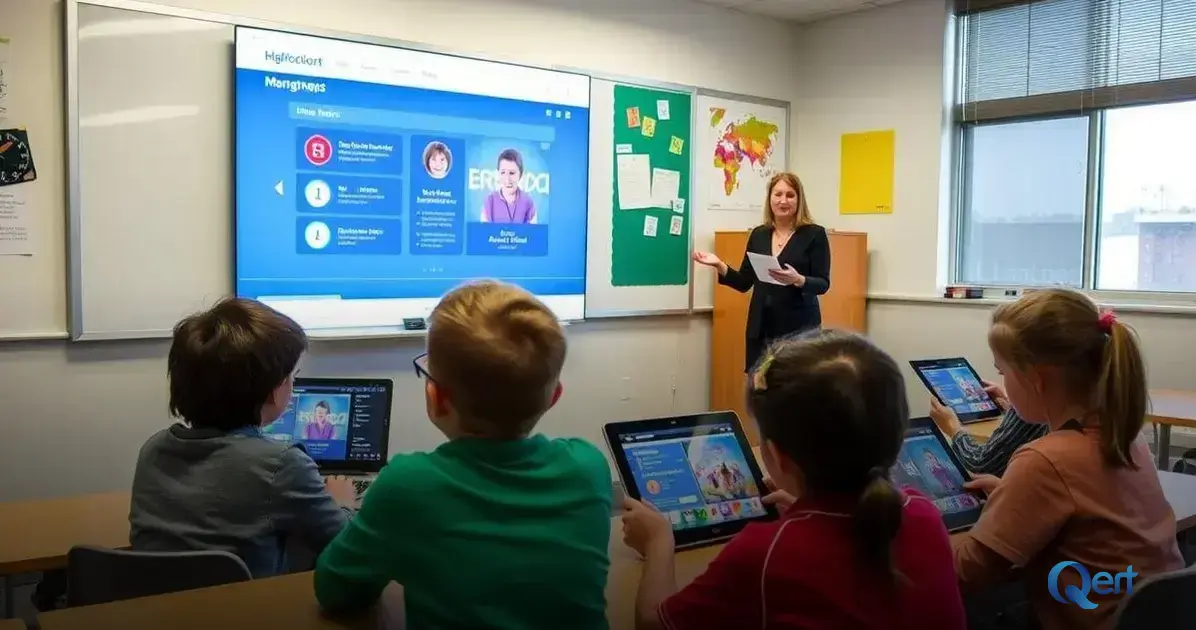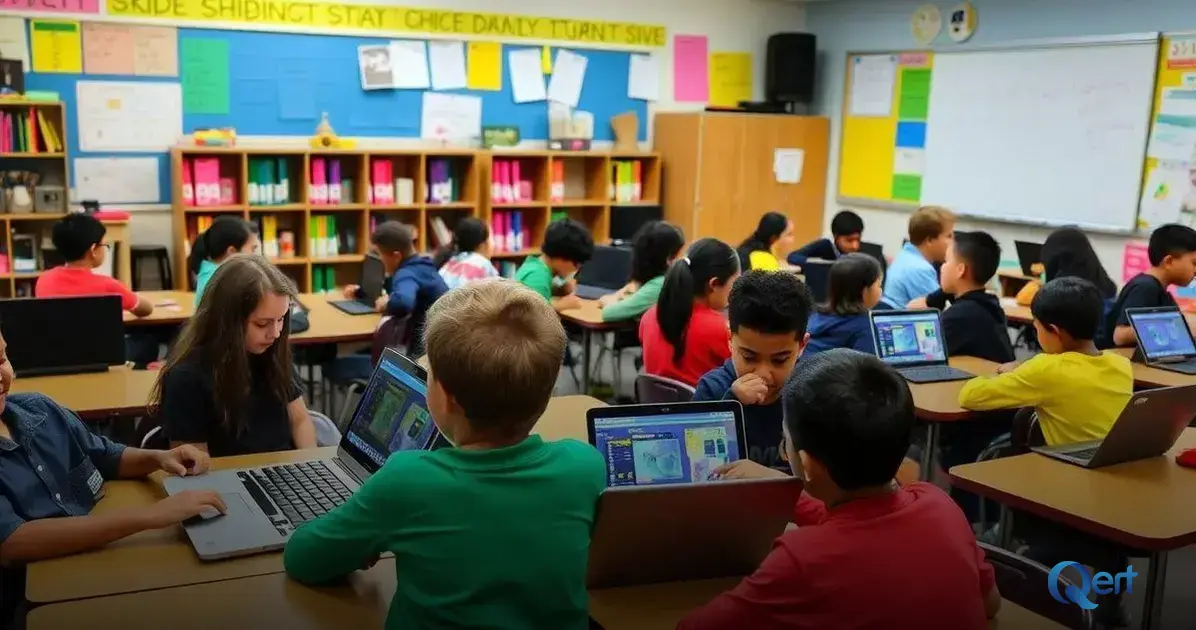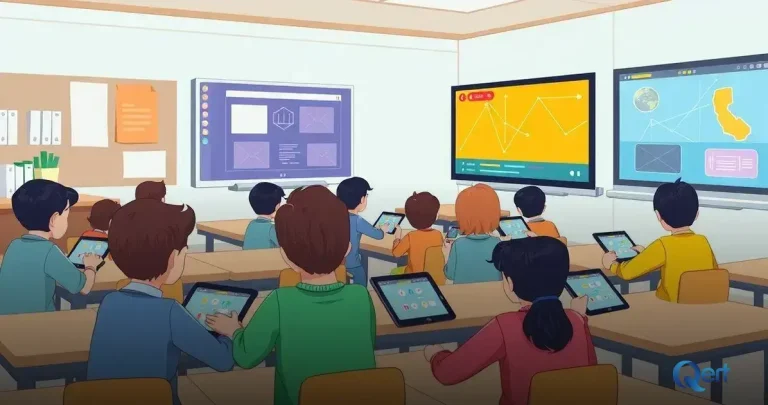ADVERTISEMENT
Tech for education is reshaping how students learn and teachers instruct, integrating innovative tools to enhance engagement.
From interactive software to online resources, technology fosters better communication and collaboration.
Understanding Tech for Education
Understanding tech for education means knowing how digital tools help students learn better. These tools make learning fun and interactive.
Students can explore subjects through videos, games, and online activities that keep them engaged.
Teachers also use tech to track student progress. They can see what each student understands and what areas need improvement.
This information helps them in planning lessons that cater to the different learning styles in the classroom.
As technology continues to grow, schools are finding new ways to include it.
More resources are available for both teachers and students, making education more effective and accessible.
This change helps children become better prepared for a tech-driven world.
Benefits of Technology in Classrooms
The benefits of technology in classrooms can be seen in how it engages students in their learning.
With interactive tools like smartboards and educational apps, students become active participants instead of just passive listeners.
This interaction helps them remember what they learn and boosts their interest in different subjects.
Technology also makes it easier for teachers to organize their lessons. They can share resources quickly and provide instant feedback to students.
This creates a more streamlined learning process where both teachers and students can focus on what matters most—education.
Another benefit is that technology promotes teamwork. Students can work together on projects using online platforms to communicate and share ideas.
This collaboration not only builds social skills but also prepares them for a future where teamwork and communication are essential.
Must-Have Tools for Educators

Must-have tools for educators play a vital role in enhancing the learning experience. One essential tool is the interactive whiteboard.
This technology allows teachers to display lessons in dynamic ways, making subjects more engaging for students.
They can draw, highlight, and share multimedia content, which keep students interested and focused in class.
Another important tool is learning management systems (LMS). These platforms help teachers manage courses, distribute assignments, and track student progress.
With an LMS, educators can easily communicate with students and provide resources that cater to different learning styles.
Finally, educational apps are a great resource for both teachers and students.
Apps can provide practice exercises, quizzes, and educational games that make learning enjoyable.
They also offer personalized learning experiences, ensuring that every student can work at their own pace, which is crucial for success.
Challenges of Implementing Tech in Education
Challenges of implementing tech in education include the cost of new technology, which can be a major hurdle for schools.
Many institutions struggle to afford the latest devices and tools necessary for effective learning.
This financial burden can lead to a lack of resources, making it difficult for teachers to integrate technology into their classrooms.
Another challenge is the need for proper training. Educators must be equipped with the knowledge to effectively use new technologies.
Without adequate training, teachers may feel overwhelmed and unable to fully utilize these tools, which can lead to a gap in the educational experience for students.
Finally, some students may lack access to technology at home.
This digital divide can create inequalities, as students without the necessary devices or internet connection may fall behind their peers.
Addressing this issue is crucial for ensuring that all students benefit equally from technological advancements in education.
Future Trends in Educational Technology
Future trends in educational technology point towards more personalized learning experiences.
As artificial intelligence becomes more common in classrooms, tools will adapt to each student’s learning style.
This means that lessons will be tailored to fit individual needs, helping students learn at their own pace and improving overall understanding.
Another exciting trend is the rise of virtual and augmented reality in education.
These technologies allow students to explore new environments without leaving the classroom.
Imagine learning about history by walking through a virtual ancient city or studying science by observing the solar system up close.
These immersive experiences can make lessons more engaging and memorable.
Finally, remote and blended learning will continue to grow in popularity.
With the rise of online resources, students can learn from anywhere in the world.
Schools will blend traditional teaching methods with digital resources, giving students more flexibility in how and where they learn.
This shift has the potential to make education more accessible for everyone.
Success Stories: Tech Transformations in Schools

Success stories of tech transformations in schools highlight how technology can greatly improve education.
For instance, a school in California introduced a coding program that allowed students to learn computer programming from an early age.
As a result, students not only enjoyed creating their own games and apps, but many went on to pursue careers in tech, showing the program’s long-term impact.
Another success story comes from a school in New York that adopted a blended learning model.
By combining online lessons with traditional classroom instruction, they were able to meet the needs of all students.
This approach helped those who struggled in a regular classroom setting to catch up while offering advanced learners the chance to explore subjects deeper.
In Texas, a district implemented digital storytelling as part of their language arts curriculum.
Students used iPads to create their own videos and presentations, enhancing their creativity and communication skills.
This innovative use of technology not only boosted students’ confidence but also improved their understanding of storytelling elements, making learning both fun and effective.
Conclusion
Technology is redefining education by making learning more dynamic, inclusive, and accessible.
From interactive whiteboards to AI-powered learning tools, these innovations support both teachers and students in achieving better outcomes.
While challenges like cost, training, and the digital divide still exist, the benefits of integrating tech into education are undeniable.
As schools continue to adapt, the focus should remain on using technology to create meaningful, personalized learning experiences for every student.
With the right tools and support, the future of education holds unlimited potential.







